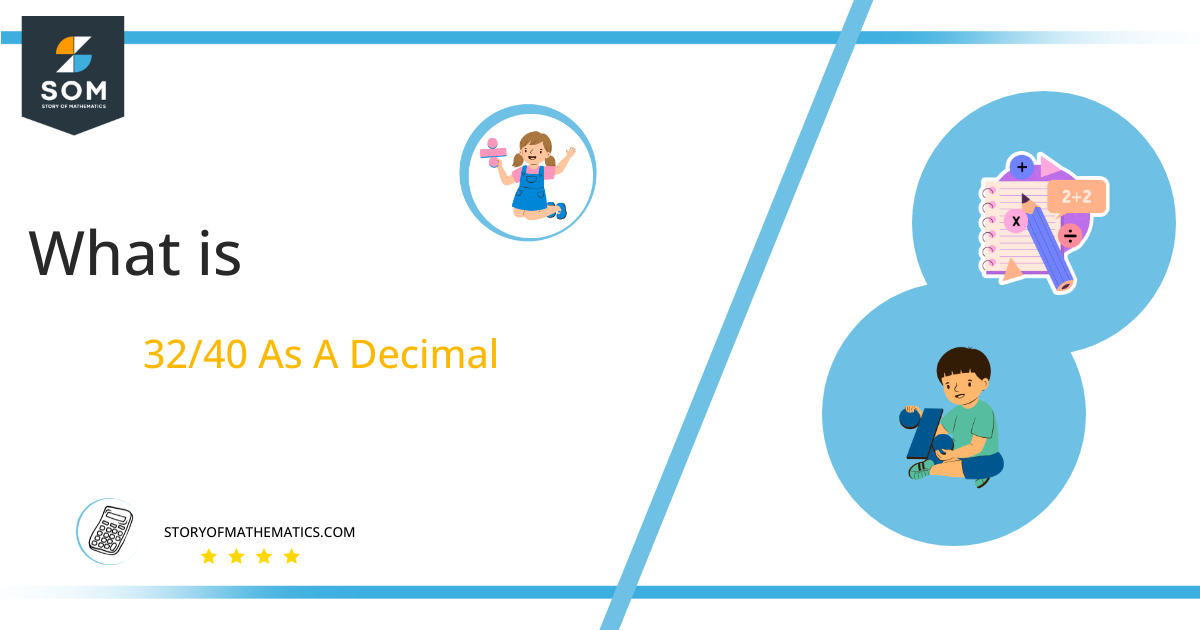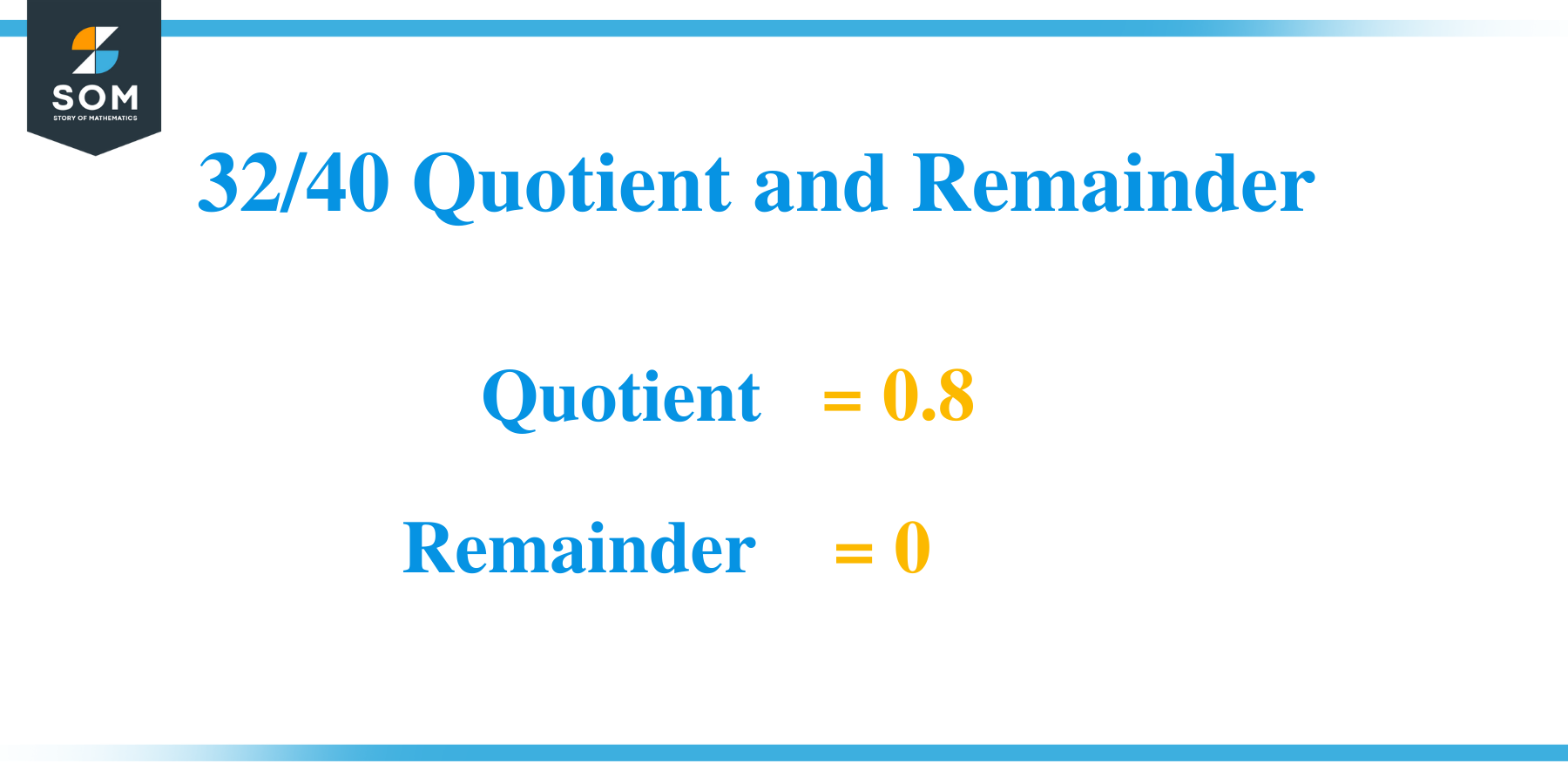What Is 32/40 as a Decimal + Solution With Free Steps
The fraction 32/40 as a decimal is equal to 0.8.
The mathematical operation of division is among the four primary operations of mathematics. Just like subtraction is the inverse of addition, division is the inverse of multiplication. Divisions can produce either a decimal or integer as the output. Fractions of the form p/q are simply one way of representing a division.
Here, we are more interested in the division types that result in a Decimal value, as this can be expressed as a Fraction. We see fractions as a way of showing two numbers having the operation of Division between them that result in a value that lies between two Integers.

Now, we introduce the method used to solve said fraction to decimal conversion, called Long Division, which we will discuss in detail moving forward. So, let’s go through the Solution of fraction 32/40.
Solution
First, we convert the fraction components, i.e., the numerator and the denominator, and transform them into the division constituents, i.e., the Dividend and the Divisor, respectively.
This can be done as follows:
Dividend = 32
Divisor = 40
Now, we introduce the most important quantity in our division process: the Quotient. The value represents the Solution to our division and can be expressed as having the following relationship with the Division constituents:
Quotient = Dividend $\div$ Divisor = 32 $\div$ 40
This is when we go through the Long Division solution to our problem.

Figure 1
32/40 Long Division Method
We start solving a problem using the Long Division Method by first taking apart the division’s components and comparing them. As we have 32 and 40, we can see how 32 is Smaller than 40, and to solve this division, we require that 32 be Bigger than 40.
This is done by multiplying the dividend by 10 and checking whether it is bigger than the divisor or not. If so, we calculate the Multiple of the divisor closest to the dividend and subtract it from the Dividend. This produces the Remainder, which we then use as the dividend later.
Now, we begin solving for our dividend 32, which after getting multiplied by 10 becomes 320.
We take this 320 and divide it by 40; this can be done as follows:
320 $\div$ 40 = 8
Where:
40 x 8 = 320
This will lead to the generation of a Remainder equal to 320 – 320 = 0. Our division is now complete, so we have a Quotient of 0.8 with a final remainder of 0.

Images/mathematical drawings are created with GeoGebra.
